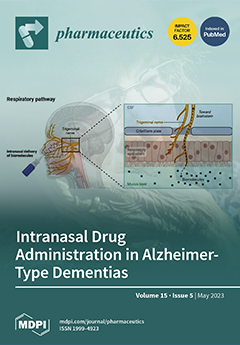Background: ATP-binding cassette (ABC) transporters comprise a superfamily of genes encoding membrane proteins with nucleotide-binding domains (NBD). These transporters, including drug efflux across the blood–brain barrier (BBB), carry a variety of substrates through plasma membranes against substrate gradients, fueled by hydrolyzing ATP. The
[...] Read more.
Background: ATP-binding cassette (ABC) transporters comprise a superfamily of genes encoding membrane proteins with nucleotide-binding domains (NBD). These transporters, including drug efflux across the blood–brain barrier (BBB), carry a variety of substrates through plasma membranes against substrate gradients, fueled by hydrolyzing ATP. The expression patterns/enrichment of
ABC transporter genes in brain microvessels compared to peripheral vessels and tissues are largely uncharacterized. Methods: In this study, the expression patterns of
ABC transporter genes in brain microvessels, peripheral tissues (lung, liver and spleen) and lung vessels were investigated using RNA-seq and Wes
TM analyses in three species: human, mouse and rat. Results: The study demonstrated that
ABC drug efflux transporter genes (including
ABCB1,
ABCG2,
ABCC4 and
ABCC5) were highly expressed in isolated brain microvessels in all three species studied; the expression of
ABCB1,
ABCG2,
ABCC1,
ABCC4 and
ABCC5 was generally higher in rodent brain microvessels compared to those of humans. In contrast,
ABCC2 and
ABCC3 expression was low in brain microvessels, but high in rodent liver and lung vessels. Overall, most
ABC transporters (with the exception of drug efflux transporters) were enriched in peripheral tissues compared to brain microvessels in humans, while in rodent species, additional
ABC transporters were found to be enriched in brain microvessels. Conclusions: This study furthers the understanding of species similarities and differences in the expression patterns of
ABC transporter genes; this is important for translational studies in drug development. In particular, CNS drug delivery and toxicity may vary among species depending on their unique profiles of
ABC transporter expression in brain microvessels and BBB.
Full article






